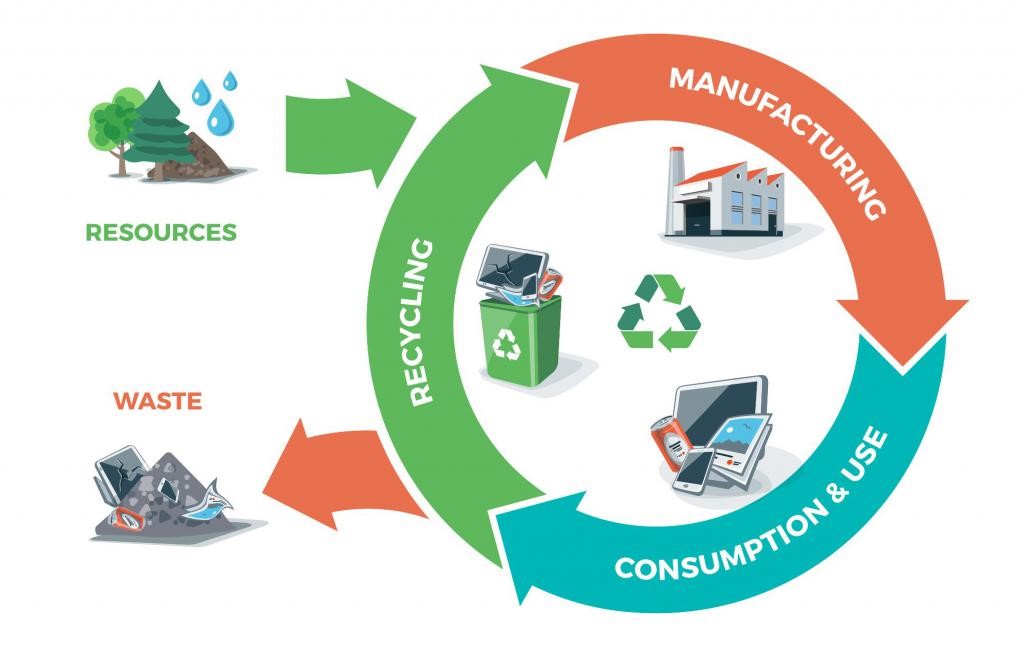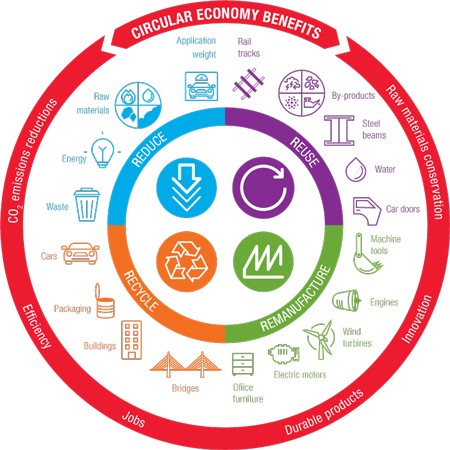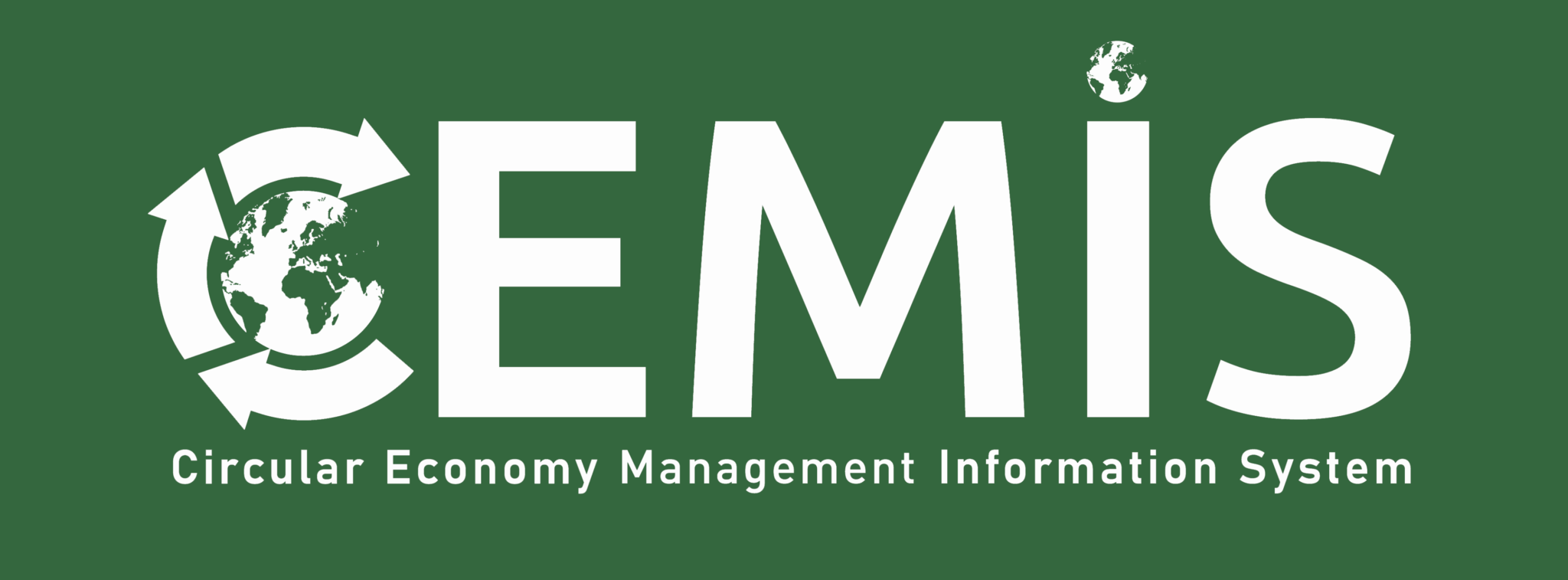WHAT IS THE CIRCULAR ECONOMY?
The circular economy is a model of production and consumption, which involves sharing, leasing, reusing, repairing, refurbishing and recycling existing materials and products as long as possible. In this way, the life cycle of products is extended.
When a product reaches the end of its life, its materials are kept within the economy wherever possible. These can be productively used again and again, thereby creating further value. In practice, it implies reducing waste to a minimum.
This is a departure from the traditional, linear economic model, in which raw materials are used, things are made from them then are consumed and the remains are thrown away. Traditional liner economic model is based on a take-make-consume-throw away pattern. This model relies on large quantities of cheap, easily accessible materials and energy.
Also, part of this model is planned obsolescence, when a product has been designed to have a limited lifespan to encourage consumers to buy it again or the value of the defective part of the product is the same as a new one.
When a product reaches the end of its life, its materials are kept within the economy wherever possible. These can be productively used again and again, thereby creating further value. In practice, it implies reducing waste to a minimum.
This is a departure from the traditional, linear economic model, in which raw materials are used, things are made from them then are consumed and the remains are thrown away. Traditional liner economic model is based on a take-make-consume-throw away pattern. This model relies on large quantities of cheap, easily accessible materials and energy.
Also, part of this model is planned obsolescence, when a product has been designed to have a limited lifespan to encourage consumers to buy it again or the value of the defective part of the product is the same as a new one.
WHAT ARE THE BENEFITS OF THE CIRCULAR ECONOMY?
- Longer use of our favorite things or things we got used to.
- Saving money by reducing the purchase of unnecessary goods, no matter how inexpensive they are offered.
- Supporting local and neighborhood businesses, repair and maintenance shops, your neighbors, specific professions etc.
- Reducing environmental pollution.
- Reducing greenhouse gas emissions (which are an element of price electricity formation).
- Protection of natural raw materials.
- Preservation and creation of new jobs.
- Ensuring access to more sustainable and saving products.
WHAT CAN WE DO?
- Stay informed.
- Use durable products or services, produced with recyclable materials and are easy for repairing.
- Learn about the warranty of the goods, period and circumstances.
- Reduce consumption. Consider sharing, renting or borrowing goods, instead of buying once that are not used regularly.
- Reuse and extend the life of a product by repairing, updating and changing its purpose.
- Donate things you don’t need. Don’t throw them away.
- Collect separately materials such as metals, glass, plastic, paper, etc. for repeatedly use.
- Change your user habits to limit waste generation.
Sources:
European Parliament
United Nations Conference on Trade and Development
Source:
https://s3-eu-west-1.amazonaws.com/europarl/circular_economy/circular_economy_en.svg

Source: https://unctad.org/news/circular-economy-silver-bullet-emissions

